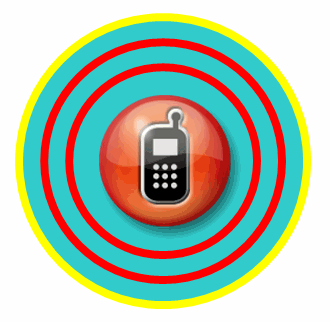 Fly the Friendly Skies but get off the phone before you check in!
Fly the Friendly Skies but get off the phone before you check in!
In a previous post, we expressed a tongue-in-cheek concern about the Transportation Safety Administration, and promise more int he future. But here's the current "problem" I think the TSA has to deal with. Continental is the first U.S. Airline testing a system that allows people to get their boarding pass sent directly to their cell phones. The electronic boarding pass can be used instead of a paper boarding pass to get through airport security and to board planes, according to Paper Is Out, Cellphones Are In, in the New York Times!
Excellent! I love the disruption that the mobile web is causing . . . but I still have a few concerns.
1) What is the backup plan for those who don't have a cell phone?
Excellent! I love the disruption that the mobile web is causing . . . but I still have a few concerns.
1) What is the backup plan for those who don't have a cell phone?
Surely there are still a few poeple who don't and won't have cell phones. If this takes off, what will be the extra cost for them to use the old-school way? And what happens if I am on an important business call as I am getting on the plane? "Hang on Fred, I have to check in . . ."
2) How hard will it be to get the information re-sent to my mobile phone?
2) How hard will it be to get the information re-sent to my mobile phone?
I know that I may be the only one this has ever happened to, but what exactly do I do if after I get the boarding pass my phone craps out? Say I'm not able to get it fixed in time, so I don't even have access to the number where the message was sent. Are we back to showing some form of ID and hoping there are still enouogh kiosks to get a printed ticket, or maybe I could borrow one of my fellow passengers' phones just until I check in . . .
3) How hard is it to spoof this?
Continental is the only airline offering the service at this point, and their boarding pass is an image of an encrypted bar code displayed on the phone’s screen, which can be scanned by gate agents and security personnel. It's reported to be a two-dimensional encrypted bar code, which is much tougher to copy than the one-dimensional bar code used by many airlines for boarding passes printed online, so T.S.A. is expected to embrace the technology. The two-dimensional version looks more like the snow on a television screen that has lost its signal.
I appreciate that the U.S. isn't the first to use this technology . . . Air Canada has been using electronic it since last September, and Japan Airlines, Scandinavian Airlines and Spanair are using it or something similar, as well.
But they aren't the countries with the big target painted around each of their major airports either, are they?
This sounds a whole lot like more of an administrative cost-cutting measure for the airlines (both in terms of supplies and employees) than it does a convenience for travelers.
What do you think?




No comments:
Post a Comment